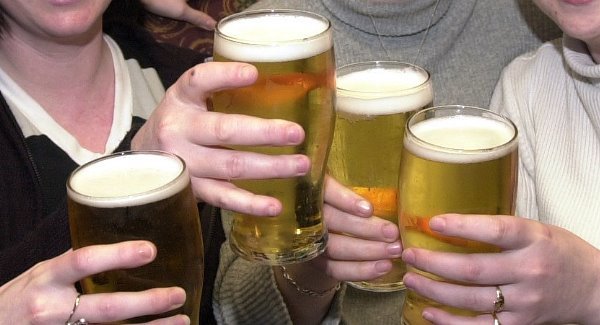The latest figures from the Revenue Commissioners’ alcohol clearance data have shown a decrease in alcohol consumption in Ireland last year.
In his paper Estimate of Alcohol Consumption per Adult in 2015, DCU Economist Tony Foley uses the CSO Population and Migration Estimates and Revenue Commissioners’ alcohol clearances, and concludes that alcohol consumption was down 0.7% between 2014 and 2015.

“The level and trend in average alcohol consumption are important elements in public policy evaluation and design,” said Mr Foley.
“Average per adult alcohol consumption decreased by 0.7% in 2015 compared with 2014; from 11.086 lpa to 11.013 lpa.
“It is useful to put the Irish figure into an international perspective. The latest OECD HEALTH STATISTICS reports an OECD average alcohol consumption for 2013 or latest year of 8.8lpa, Ireland in this database is measured as 10.6lpa.
“The OECD average has been identified as a policy target for Ireland.
“However, this is not necessarily appropriate. The OECD database includes far distant and culturally specific countries such as Turkey and Israel with very low alcohol consumption around 2.6 and 1.4 lpa respectively and several other countries with low-ish consumption such as Canada, Chile, Japan, Mexico and USA.
“The non EU countries in the database have an average consumption of 7.1 lpa.
“The 21 EU members included in the OECD database have an average consumption of 9.9 compared to the 10.6 recorded in the database for Ireland.
“Ireland is not widely out of line with this. These figures exclude unrecorded consumption which can be relatively high in some countries."
Alcohol Action Ireland welcomed the news.
“The reason that per capita alcohol consumption is important in a public health context is that it is considered a good indicator of levels of alcohol harm in a country, an issue that this report completely fails to address,” it stated.
“Though our consumption is down from its all-time high of over 14 litres per capita, the trend is not moving steadily downwards and our alcohol consumption remains higher now than in 2013, as this report points out.
“At our current level of 11 litres, we not only retain very high levels of alcohol consumption, but our culture of binge drinking exacerbates the harm.
“The World Health Organisation found that we have the second highest rate of binge drinking in the world, a pattern of alcohol consumption which is particularly harmful for our physical and mental health, as well as contributing to the many societal problems that alcohol is a major factor in, including crime, suicide, road deaths, and serious issues surrounding child welfare and neglect.
“Most importantly, three people continue to die every day in Ireland due to alcohol and the problems it causes also continue to put an unsustainable burden on our health service, taking up some 1,500 hospital beds every night.
“If we don’t take steps to address our high levels of alcohol harm then many lives will continue to be lost and many Irish people will continue to suffer.”
Maggie Timoney, chair of the Drinks Industry Group of Ireland and chief executive of Heineken Ireland said: “When framing public policy issues pertaining to alcohol, it is important that we rely on an appropriate fact base.
“The drinks industry is committed to working with the Government in the context of the Public Health (Alcohol) Bill to find workable and effective solutions to address misuse.”


